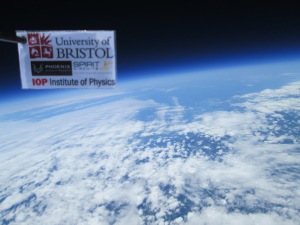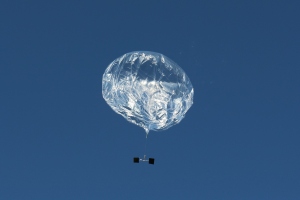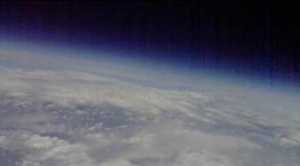 Richard Meadows M0SBU reports two high altitude balloons carrying 434 MHz payloads will launch from Bristol on Monday, August 29. There will be Slow Scan Digital Video (SSDV) transmissions.
Richard Meadows M0SBU reports two high altitude balloons carrying 434 MHz payloads will launch from Bristol on Monday, August 29. There will be Slow Scan Digital Video (SSDV) transmissions.
Online real-time tracking of UBSEDS balloons https://tracker.habhub.org/#!mt=roadmap&mz=8&qm=3_days&q=UBSED*&f=UBSEDS20
We’re planning the first launch of ‘pico-pi’, our Raspberry Pi Zero based tracker, from Bristol this Bank Holiday Monday, August 29 between 0500 and 0530 BST. This launch is using a 1.9m envelope and longer payload train, and so we have a NOTAM in place.
There’s more information about the tracker itself here: https://github.com/bristol-seds/pico-pi-rel
The combined payload mass will be about 70 grams, and the attempted float altitude will be about 13 km. This is our first launch of this setup, so it seems unlikely that everything will go to plan!
First is the UBSEDS19 backup tracker, which is powered from a single AAA Lithium Energiser battery. It transmits Contestia 16/1000 with pips and RSID on 434.615 MHz USB, once per minute below 8km altitude and every two minutes otherwise. The battery is expected to last a few days.
Next is UBSEDS20, which is the experimental Raspberry Pi Zero board. This is powered from solar panels only, and hence is only expected to operate continously after about 0830 BST (before this it may transmit without a GPS lock, as the Raspberry Pi and GPS are powered down).
– 434.610 MHz USB: 300 baud RTTY, 850Hz shift, 8N2 transmitting telemetry and SSDV. There is also Contestia 16/1000 with RSID on this frequency. If you are listening to the RTTY, remember to turn off the ‘RxID’ button on the top right of dl-fldigi.
– 869.85 MHZ LoRa ‘Mode 3’ (250kHz / SF7 / EC4:6, explicit header), transmitting SSDV with the callsign ‘UBSEDL’. This frequency is only active in Europe. Many thanks to Dave Akerman M0RPI for making his work on LoRa available for us to use, including the lora gateway.
Rather than the usual JPEG SSDV, this payload is transmitting Better Portable Graphics (BPG) images. This is experimental, and ssdv.habhub.org doesn’t support it just yet. Hence receivers should upload to http://ssdv.bristol-seds.co.uk/ instead, please read the instructions on this site. You’ll need dl-fldigi release 3.2 and slightly modified LoRa gateway, as explained on the site. The dl-fldigi release can be found here: https://github.com/jamescoxon/dl-fldigi/releases/tag/3.2
Many thanks to everyone who attempts to track these.
Richard Meadows M0SBU
Bristol SEDS http://www.bristol-seds.co.uk/
Useful balloon links https://amsat-uk.org/beginners/balloons/
Richard took the amateur radio courses run by the Chelmsford Amateur Radio Society (CARS) at Danbury in Essex. Further information on the courses is available from the CARS Training Coordinator, Christopher G0IPU
Tel: 07908-107951
Email: training2016 at g0mwt.org.uk
Web: http://g0mwt.org.uk/training




You must be logged in to post a comment.